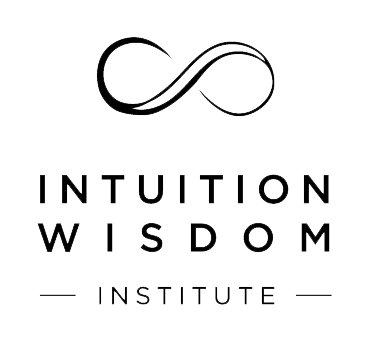I’ve always been a headless chicken, the kind of bird that runs back to the front door to make sure it’s locked, then runs back again to make sure the cooker is off, and then has to run back a third time to make sure the front door got locked again after having checked on the cooker.
Does that sound familiar to you? What a waste of nerves and energy that is!
This happens because we are constantly thinking about a thousand things at a time. Well, not at the same time, but our thoughts follow each other so fast that we perceive them as all happening at the same time. So we are locking the door, which only takes a tiny bit of our attention because it’s automatic, and while we do that, there’s space in our head for a whole bunch of other thoughts. And then we’re standing at the bus stop and we just cannot remember having locked the door.
Our mind is constantly talking to us about a thousand relevant or irrelevant things, it doesn’t stop commenting, complaining, urging, criticising, praising, insulting, comparing, judging, regretting, shouting, whispering, laughing, whinging, suggesting… It won’t leave us in peace for a single second. With its constant chatter, our mind spends a lot more time in the past and in a hypothetical future, than it does in the present, and so we often miss out on the present because we are either stuck somewhere in the past or racing ahead of our time. Even a trivial thing like locking a door only happens in that very moment, and if we are somewhere else while it happens, we’re missing out.
You might have come across the concepts of “mindfulness” and “meditation”. They might evoke pictures to you of either some incredibly fit individuals sitting in flashy yoga clothes with their legs crossed and their eyes shut in some tropical dream landscape, or of a bunch of Buddhist monks in their orange garments. And you might think that none of that has anything to do with you and with your day-to-day life. Same for me! But I have been practising mindfulness for many years now, and meditation for a few and I think they are two amazing things to bring into your life.
Mindfulness and meditation are often used as synonyms, but they are not exactly the same thing.
Mindfulness is the mental state of being fully present, totally aware of our body and the space around us, of what we are seeing, hearing, doing. Meditation follows mindfulness, it’s the next stage, where we shift our attention from the purely physical awareness of the moment to the observation of our thoughts and emotions. The better we are at mindfulness, the better we become at meditation. It took me years to get to that stage.
I had my first glimpse of some mindfulness the day I discovered deep relaxation, when I was 17 years old. It was a mostly physical thing for me then, but still, it really got me a big step further in my life. Learning to relax your body completely, then giving your full awareness to every part of it, and then listening to your breathing, is a great way to get started.
Then around that same time, one day I had a flash of awareness that pushed me one step forward on my track. It was on a warm summer’s day, and I was sitting outside eating an incredibly beautiful, perfectly ripe, absolutely delicious peach. I was left with the last two bites, when I realised that I hadn’t given that wonderful thing a single thought, and that I had eaten it without even looking at it, without savouring it, I had just wolfed it down thinking about something else.
How could I have missed out on that?? It then took me as long to eat those last two bites, as it had taken me to eat the rest of the peach. After savouring and appreciating them to the fullest, I realised that the way I ate the peach was a perfect mirror of the way I was doing all other things as well. And if I wasn’t even able to give my full attention to eating, which has always been one of my absolute favourite things, how the hell was I dealing with everything else?? Absent-mindedly!
Over the following years even though I tried to be a bit more present to the moment and to focus on things a bit more, I would often forget to do that, then remember again, do it a little bit on and off, then forget again…
And somehow, even though I always kept practising deep relaxation, which is a very mindful thing to do, I hadn’t come across the concept of mindfulness yet, and wasn’t sure what meditation was, exactly.
Still, I started developing my own, action-based form of mindfulness back then (this was around 1987, no internet, not much information nor inspiration), which I took to a good level, I think, over the years. I started practising giving my full attention only to what I was doing in that moment and nothing else.
My favourite training ground was – and still is – cleaning the kitchen. Have you ever tried washing up and only washing up? Without listening to music, thinking about what you’re going to do next or that you’d rather be doing something else? Without getting distracted? Giving your full attention to the soapy sponge in your hand, the plates and cups, the movements of your hands? Not wandering with your gaze, but only looking at what you’re doing, without checking your phone or whatever? Without judging whether it’s boring, or pleasant, or a necessary evil, or that you’re short for time, and without making a shopping list in your mind? Basically, without listening to the chatter of your mind, in perfect silence within? It’s less easy than you might expect.
No matter whether you practise mindfulness from a place of deep relaxation, or sitting, or in action, you’ll see that your mind will constantly throw random, usually loud thoughts and words at you. That’s normal. Don’t try to shut it down, that’s almost impossible to do, and don’t get angry or frustrated. Just watch the thoughts and words come, don’t judge them, just go back to your focus.
It will happen over and over again, every time you get flooded with thoughts, the moment you realise you’re drifting off, just go back to your focus. At the beginning you might drift off for a long time and forget about your focus altogether, but then with time and practise this will happen less and when it does, you’ll realise straightaway.
You’ll become able to decide whether or not you give any attention to your passing thoughts. All thoughts are passing. Some will come back more often than others, and when it gets bad we call them obsessions, but they all pass and we can eventually get to a point where our attention to them is so small we hardly notice them anymore.
If you’ve never tried mindfulness before and you want to give it a go, I suggest you start with food. Same principle, remember my peach? Choose something you really like, then sit down somewhere nice and quiet and start giving it your undivided attention. Look at it, notice the shape, the colours, the texture. These things will probably set you thinking about something similar you’ve had before, and off you go on a chain of thoughts… Just observe these passing thoughts and go back to your food. Then smell it. The same thing might happen again, smells are very powerful triggers for our memory… Off you go again, and when you realise, you simply come back. Start eating it, one small mouthful at a time, and savour every mouthful as if it were the only one you had. Can you just only enjoy your food without getting carried somewhere else by your mind? Can you take your next mouthful after the previous one is swallowed and not while you’re still chewing on it?
If you get into a habit of doing one or two things this way, it becomes a lot easier to apply it to other areas as well. Ideally, we would spend every single minute of our lives like that, fully in the present. Of course we could be writing or talking to someone about the past, then we would consciously think about the past, or we could make plans for the future, and then we would consciously think about the future. Everything is good as long as it’s conscious. What we want to avoid, are the many “blackouts” that steal so much of our real life.
You can apply mindfulness to driving, or painting, or sex, or walking… anything you love doing will be a great starting point!
The next thing you can do is mindful observation. Light a candle, or put a flower in a glass, or choose a stone, a shell, anything you like, and just look at it with no further thinking, comparing, judging etc involved in the process. Just sit or find any position where you can relax your body and then only focus on this one thing. This is a great exercise and a great second step.
Now, meditation is the master level of that. Meditation requires that we are so good at focussing that we can dedicate our full attention to something that’s only inside our mind. There’s no external help for our senses as we had with washing up, or eating or looking at something. Now we want to give our full attention to a feeling we have, or to a thought, to a question, or to the solution of a problem.
As you can see, all these are things that exist outside of us. By this I mean, they are in our brain of course, but they are not us, not who or what we are. Our thoughts and emotions are things that we can observe and analyse, just like anything else out there. When mindfulness has taken us to a point where we just sit there, and we are the observer of things, then everything falls into the category of things we can observe, including our thoughts and emotions.
And this is now a place and a time where we can transform these thoughts and beliefs and outcomes. Here we can shine the big bright light of our awareness on things, and see them with so much more clarity than before. And this is the space and time for visualisation.
Visualisation is a very powerful technique to help us get to where we want to be.
Consistently seeing our life the way we want it, in our mind’s eye, will help us get there, because it will rewire our brain to look for the right kind of things. Things that will take us closer to our goals, to understanding the opportunities, to making the right choices. Visualisation made from a space of mindfulness is, I believe, the most amazing form of meditation.
There is one very special space that’s like no other, I imagine it’s where action-based mindfulness and meditation meet, and that is creativity. A creative artist, be it a painter, a sculptor, a designer, any kind of visual artist really, or a composer, a choreographer, a poet, when they create something inspired, they operate from that privileged space.
That’s the most enabling, empowering space I can think of. There are some lucky people who just fall into that space naturally, but most of us have to find their own path there. It takes time, desire, and discipline, but it’s a fascinating path to follow and you will find many beautiful flowers on your way there.




